Reducing costs in your recruitment processes with a well-planned strategy can help you allocate your resources where it matters the most. This blog offers insights to help you manage your expenditure on recruitment for 2021 and beyond.
The financial impact of the global pandemic has made many industries take serious steps on cutting down expenses to stay afloat in the face of uncertainties. The biggest challenge was to maintain adequate budgets allocated for hiring new employees and retaining existing ones without putting much burden on resources.
From reducing employees’ salaries to laying off personnel, companies all across the globe had to make some tough decisions to sustain themselves. Now that the market is slowly picking up pace, the role of HR has become even more challenging as employee roles and organizational structures and business models changed. From a financial perspective, industries had to drastically change organizational structures and delay hiring to save keep overheads at minimum.
This blog will give you practical insights to make your recruitment strategies more aligned with the latest trends and find the best talent without putting burden on your company budget.
Cost of employee hiring in 2021
Before getting to the ways you can save costs while hiring, let’s look at various costs involved in the recruitment process to get a better look at possible expenses to better manage it.
External hiring support: Many emerging small and medium enterprises are opting for third-party HR support rather than hiring an in-house team. Considering small businesses spend over 40% of their working hours in activities that do not generate revenue, hiring an external HR agency is the most viable option to maximize productivity.
Internal HR team: Larger firms with employee numbers ranging from 50 to 100 have to hire their own internal HR team to undertake a personalized recruitment system. Ideally, the internal HR system comprises at least one HR manager that undertakes every hiring process from putting job ads, interviewing, to the final onboarding. The salary of an internal HR expert ranges from $91,000 to $1,20,000 per year.
Job Boards: Putting job ads on websites with relevant traffic needs the right budget allocation and in-depth knowledge of various job platforms. Top job search platforms like LinkedIn, Monster, Dice, ZipRecruiter, etc. provide ample opportunities to find the right candidate with impactful job ads. However, the average time of hiring a new employee using such portals is around 42 days; hence you have to keep updating your ad post to maximize reach, impressions, and applications.
Employee onboarding and training: Once a new employee joins your company, the next crucial step is to introduce new employees to the company’s work culture, their role in the organization, and make them comfortable in their new job. Research shows it takes around 8 to 26 weeks for a new employee to become fully productive. With the advent of tech platforms, companies have begun digitally onboarding employees interactive online onboarding sessions they can attend from anywhere.
Salary and benefits: Salary is the biggest expense you incur with every new employee. Organizations plan salaries considering the job position, complexity and skill required, and most importantly, the tax structure in the city and state they operate in. Additionally, employees expect their income to rise periodically to keep up with the increased cost of living. Organizations also need to provide additional benefits like travel allowances, productivity, seminars, health and wellness initiatives, and so on.
Now that we’ve reviewed some of the major expenses involved in hiring new employees, let’s look at measures to save costs.
INTERNAL MOBILITY
Rather than hiring a new employee, how about mobilizing your existing employees for new job roles? Not only does it help organizations reduce the cost of hiring and training new employees, but it also keeps your existing employees retained and engaged by giving them growth opportunities. Creating a work environment where employees can move upwards based on skill and performance helps retain the best talent and adds value to the employer’s brand.
However, creating an ideal internal mobility strategy is easier said than done. A survey conducted by Deloitte states that 49% of organizations lack an internal process to identify and move employees to new roles. Having a constant skill improvement program can help you in enhancing employee skills and evaluating them to match the current and required job position. Hiring high-potential interns for diverse entry-level jobs can also help you find the right internal talent.
FOCUS ON EMPLOYEE REFERRALS
Hiring with referrals has gained significant traction in the last few years. You can give your employees a referral bonus with every successful candidate hired with their recommendation. Although you need to allocate a separate budget to do it effectively, it will give you substantial results in a long run. With a reference approach, you can have a pool of candidates with better knowledge about your company and allocating them to a dedicated job position becomes much easier.
Your employees are your best brand ambassadors, given their employee experience is positive. They would be honest about the organizational culture, management, pay scales, etc. when referring friends or acquaintances for open positions. Hence, in order to acquire quality talent and incentivize your employees to refer strong candidates, you need to constantly improve and maintain your employer brand. This can be achieved by adopting employee-centric policies along with a culture of equality and inclusion.
USE AUTOMATION FOR HIRING PROCESSES
Automating stages and activities in the recruitment process is perhaps the most cost and time-effective way to streamline your hiring campaigns. The golden rule of recruitment is lower time to hire directly correlates with a lower cost per hire.
Using the latest enterprise-level technologies, you can automate repetitive or low-value tasks in the hiring process; you can reduce the human intervention while making the process even more accurate. You can automate one or more aspects of the recruitment process such as:
- Advertising open roles
- Tracking job applicants
- Recruiting on social media
- Pre-screening candidates
- Scheduling job interviews
INCREASING EMPLOYEE RETENTION
It’s common knowledge that keeping top-performing employees’ costs lesser than hiring a new candidate for the same role. Improving employee retention rates through employee-centric policies and cultures goes a long way in ensuring stability and lowering recruitment costs.
A study conducted by Clutch shows the most common employee perks given by organizations:
- Flexible working hours (32%)
- Professional development (28%)
- Fitness/health perks (19%)
- Food/Snacks (19%)
With the rising popularity of work from home, it has also become a big factor for today’s job aspirants in selecting the organization. In addition to the factors mentioned above, you can further improve employee retention by building a great onboarding process, conducting career development seminars and meetings, ensuring better work-life balance through policies, and conducting employee recognition and reward programs.
Taking these steps, in addition to working with a trusted hiring partner, can make your recruitment process more streamlined, cost-effective, and result-driven. VBeyond Corporation provides diversity-focused, end-to-end global recruitment services that cater to your industry-specific talent needs.
Talk to our talent experts for staffing strategies and solutions.


